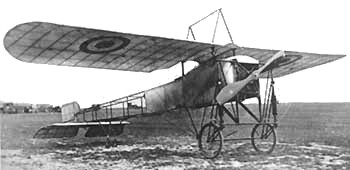|


On
25 July 1909, Louis Blériot made history when he flew his Blériot XI
monoplane across the English Channel from France to England. His
fragile looking aircraft did not go unnoticed. By the following year,
it was in use by the military of France and Italy. Great Britain began
flying it in 1912. When the war began, eight squadrons of the French
Air Service, seven squadrons of the Royal Flying Corps and six
squadrons of the Italian Air Service were equipped with variations of
the Blériot XI. Structural improvements and larger engines led to
several versions of the aircraft, including the Blériot CI-3
three-seater. The XI Militaire and XI Artillerie
monoplanes were single-seat models, while the XI-2 Génie
and XI-2 Artillerie were two-seaters with larger engines.
Country: France
Manufacturer: Louis Blériot
Type: Reconnaissance
Entered Service: 1914
Number Built: 132
Engine(s): Gnome rotary, 50 hp (XI Militaire and XI Artillerie)
Gnome rotary, 70 hp (XI-2 Génie and XI-2 Artillerie)
Wing Span: 33 ft 11 in [10.33 m]
Length: 27 ft 10 in [8.48 m]
Height: 8 ft 5 in [2.65 m]
Empty Weight:
Gross Weight: 1,838 lb [834 kg]
Max Speed: 66 mph [106 km/h]
Ceiling: 3,280 ft [1,000 m]
Endurance: 3˝ hours
Crew: 1 (XI Militaire and XI Artillerie)
2 (XI-2 Génie and XI-2 Artillerie)
Armament: None |
